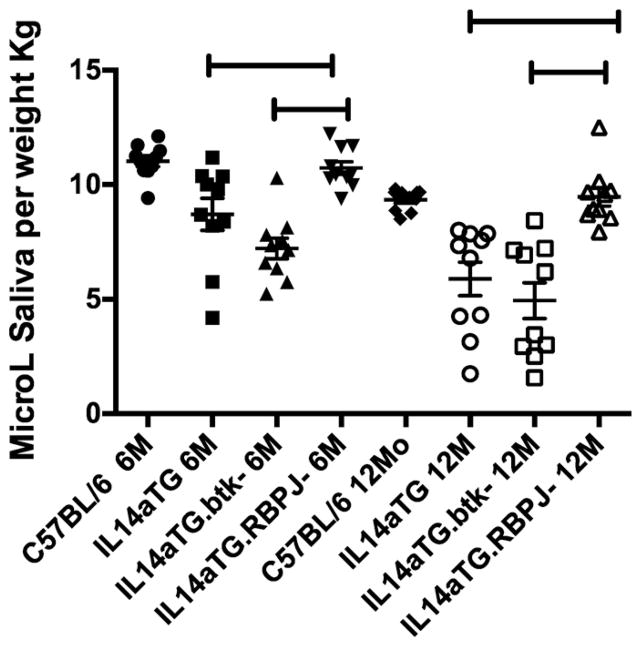Fig. 2.
This figure demonstrates the salivary gland secretions determined after Pilocarpine stimulations of groups of mice indicated as above. Ten mice were studied in each group at 6 and 12months of age. The group designated IL14αTG.btk-mice is IL14αTG.btk−/− and the group designated IL14αTG.RBP-J- is IL14αTG.CD19Cre.RBP-J−/−. The difference between the salivary gland secretions of C57BL/6 mice at 6 months of age and those of IL14αTG mice at 6 months of age was statistically significant (p = 0.0032) as was the difference between C57BL/6 mice at 6 months of age and IL14αTG.btk−/− mice at 6 months of age (p < 0.0001). There was no difference between the salivary gland secretions of C57BL/6 mice at 6 months of age and those of IL14αTG.CD19Cre.RBP-J−/− mice at 6 months of age (p = 0.4166) or of C57BL/6 mice and IL14αTG.CD19Cre.RBP-J−/− mice at 12 months of age (p = 0. 767). At 12 months of age the difference between the salivary gland secretions of C57BL/6 mice and IL14αTG mice (p = 0.0002) or IL14αTG.btk−/− mice (p < 0.0001) became even more significant. The bars on the top of the figure emphasize statistically significant differences.

